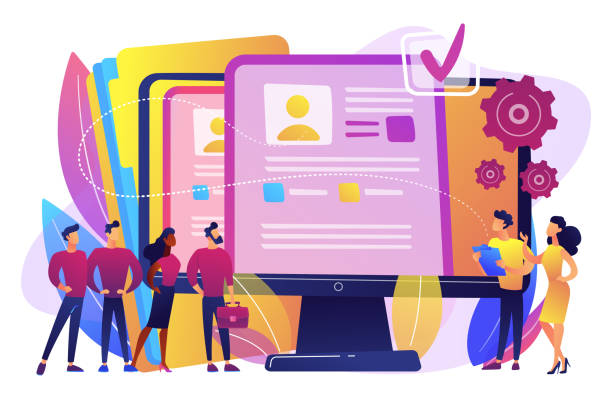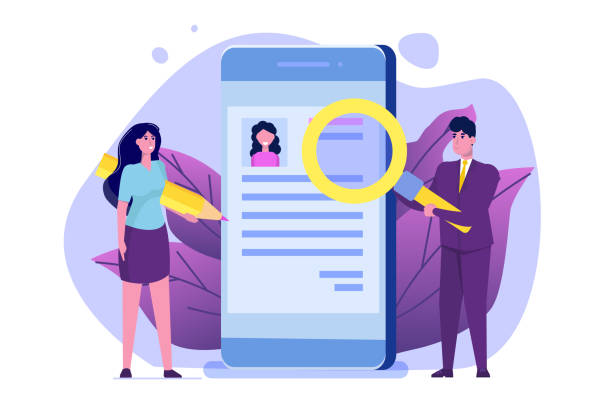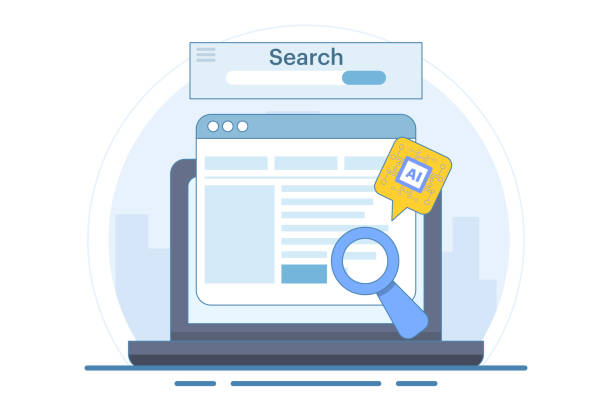Why Do We Need a Personal Website?
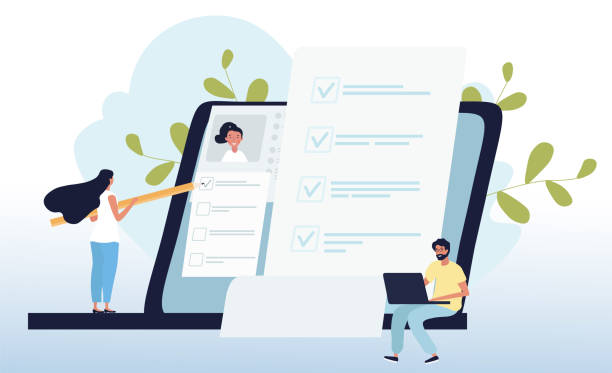
In today’s digital world, having a personal website is no longer just an option; it’s a necessity.
This online platform plays a key role in shaping your #online_identity and allows you to showcase your story, skills, and achievements in a controlled and professional manner.
Unlike social networks, which are controlled by other platforms and where your content gets lost among hundreds of other posts, a personal website is a unique space that belongs entirely to you.
This space allows you to strengthen your #personal_branding, build credibility, and be recognized as an expert in your field.
For artists, writers, consultants, programmers, and even job seekers, a personal website acts as a dynamic and always-available resume that can comprehensively and systematically present your portfolios, articles, and perspectives to potential audiences and employers.
Designing a personal website is not only a tool for showcasing your #abilities and achievements but also a long-term investment in your professional and personal journey.
This platform enables direct communication with audiences, collecting feedback, and creating new job opportunities.
This environment is completely under your control, and you can publish any type of content in any form you desire, without platform limitations or variable algorithms.
Is your e-commerce site ready to attract maximum customers and increase sales? Rasaweb transforms your online business with modern and efficient e-commerce website designs.
✅ Increased speed and improved SEO
✅ Excellent user experience on mobile and desktop⚡ Get a free e-commerce website design consultation from Rasaweb!
Initial Planning and Goal Setting
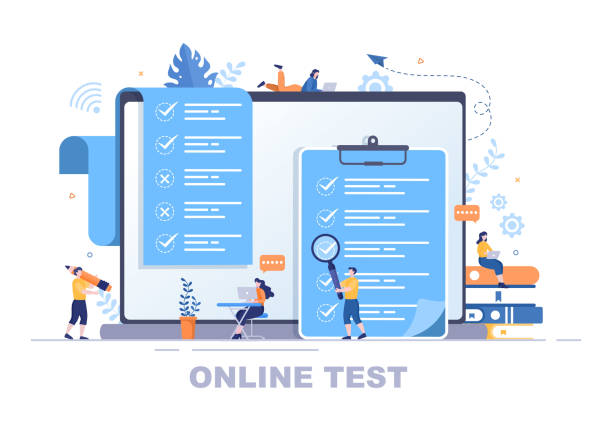
Before delving into the technical stages of personal website design, the crucial step is planning and setting goals.
This stage forms the cornerstone of your website’s success and prevents future confusion and wasted time.
First, ask yourself: What is the main purpose of building this website? Do you intend to create an online portfolio to showcase your artistic works? Or perhaps a personal blog to share your knowledge and experiences? Or even a platform for offering consulting services or selling handmade products? Clearly understanding the goal makes it easier to determine the type of content and overall structure of the website.
The next step is to identify your target audience.
Who will be visiting your website? What are their interests, needs, and expectations? Answering these questions helps you produce content that is truly appealing and valuable to your audience.
After that, think about the site’s structure.
Draw a sitemap of your website’s main and sub-pages.
For example, “About Me,” “Portfolio,” “Blog,” “Contact Us,” or “Services” are common pages.
This map gives you a comprehensive view of the required content and how to organize it.
Finally, consider the user experience (UX) at this early stage; how easily users can navigate your site and access the information they need.
Having a clear vision at this stage ensures that your personal website design project stays on track and achieves desired results.
Choosing the Right Platform and Tools
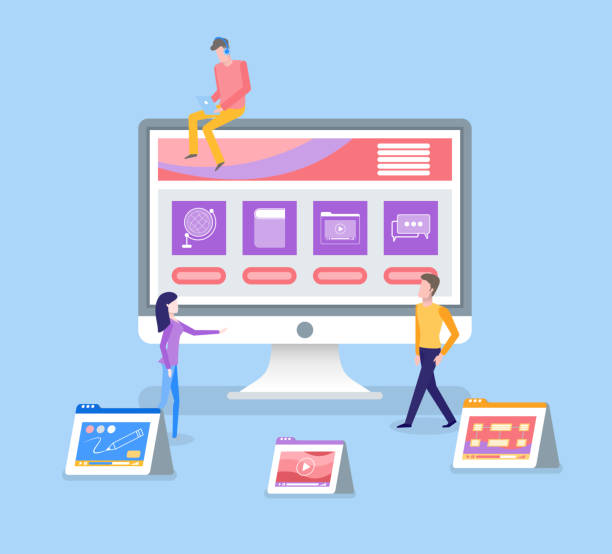
Choosing the right platform for building a personal website is one of the most important decisions you’ll make, as this choice directly impacts the ease of the personal website design process, flexibility, costs, and future capabilities of your site.
Many options are available, each with its own advantages and disadvantages.
Content Management Systems (CMS) like WordPress, Joomla, and Drupal are the most popular choices.
WordPress is an ideal option for many users (from beginners to professionals) due to its ease of use, vast ecosystem of plugins and themes, and large user community.
This platform offers high customization capabilities, allowing you to build various websites, from simple blogs to complex online stores.
In contrast, Website Builders like Wix, Squarespace, and Shopify (for online stores) provide quick setup without coding knowledge, thanks to their drag-and-drop user interfaces.
These options are generally more suitable for beginner users looking to quickly launch a website with ready-made templates, but they may have limitations in advanced customization.
For developers or individuals with very specific needs, coding a website from scratch using languages like HTML, CSS, and JavaScript offers the most control and flexibility, but requires deep technical knowledge and more time.
Choosing the right host (web host) and domain is also crucial at this stage; the domain is your website’s name (e.g., yourname.com), and the host is the space where your website files are stored.
These initial decisions form the foundation of your website’s long-term success.
| Platform | Advantages | Disadvantages | Suitable for |
|---|---|---|---|
| WordPress (CMS) | High flexibility, abundant plugins and themes, large user community, SEO-friendly. | Requires regular maintenance, initial complexity for some users, security vulnerabilities if not updated. | Blogs, resumes, small business websites, professional portfolios. |
| Wix & Squarespace (Website Builder) | Very easy to use, drag-and-drop interface, beautiful ready-made templates, no coding required. | Limitations in deep customization, platform dependence (Vendor Lock-in), sometimes weaker SEO. | Beginners, quick portfolios and resumes, small businesses with simple needs. |
| Coding from Scratch (HTML, CSS, JS) | Full control over design and functionality, optimal performance, limitless customization, high security. | Requires high technical knowledge, time-consuming, higher cost for development and maintenance. | Developers, highly specific and unique projects with precise functional requirements. |
Principles of Visual Design and User Experience (UI/UX)
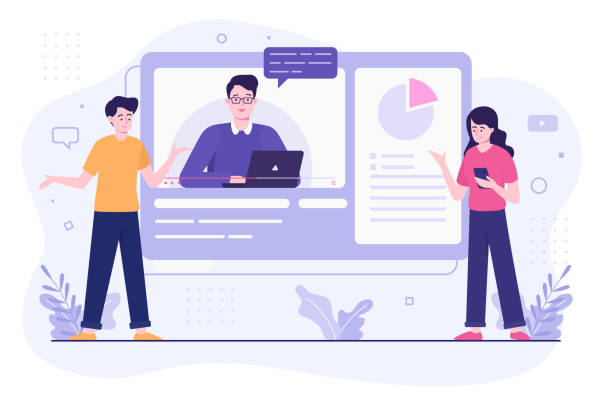
After choosing the platform, it’s time for visual design and user experience (UI/UX), two inseparable elements in the success of any website.
Visual design (UI) relates to the appearance and aesthetics of your site; how #attractive and #professional it looks.
This includes choosing colors, fonts, images, icons, and the overall layout of elements on the page.
The main goal of UI is to create a pleasant and harmonious visual experience that reflects your personal brand identity.
On the other hand, user experience (UX) addresses how easily and effectively users can interact with your website.
Is your site’s navigation intuitive and easy? Can users easily find the information they need? Are the forms simple and understandable? Good UX makes users enjoy visiting your website and encourages them to return.
One of the most important principles in personal website design is #Responsive_Design or responsive design.
This means your website should display correctly and function well on all devices, from large desktop computers to tablets and smartphones.
Also, page loading speed (Page Speed) is another critical factor; if your site is slow, users will quickly leave it.
Using optimized images, clean coding, and strong hosting can help improve speed.
Ultimately, personal website design should be such that, while beautiful, it has flawless and user-friendly functionality so that visitors have a pleasant experience and spend more time on your site.
Disregarding these principles can lead to high bounce rates and loss of visitors.
Did you know that 85% of customers check your company’s website before any interaction?
With Rasaweb, build the corporate website that your reputation deserves.
✅ Increased credibility and customer trust
✅ Attraction of high-quality leads
⚡ Get free website design consultation
Producing Engaging and Targeted Content
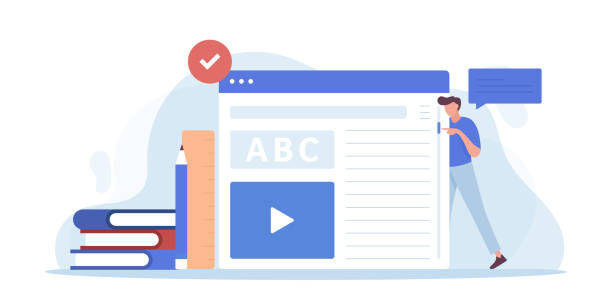
Once your website’s infrastructure and visual design are ready, it’s time for the most important part: producing engaging and targeted content.
Content is the #beating_heart of any successful website and the main factor that attracts and retains visitors to your site.
Your content should not only provide valuable information but also be aligned with your website’s goals and your audience’s needs.
For example, if your website is a portfolio, project descriptions should be clear, concise, and inspiring, and include high-quality images of your work.
If you have a personal blog, your articles should be in-depth, informative, yet fluid and engaging.
Think about content format diversity; in addition to text, you can use images, videos, infographics, podcasts, or even slideshows to attract more audiences and create a richer user experience.
Rich and relevant content is the beating heart of any successful personal site.
Ensure your content is unique and original; plagiarism is not only ethically wrong but also harms your site’s SEO.
Regular content updates are also very important; active and dynamic websites that continuously add new content are more attractive to both search engines and users.
In each section of your content, be sure to include a Call to Action (Call to Action); for example, “Contact us for more information,” “View my portfolio,” or “Subscribe to our newsletter.”
This guides users towards your desired goal and increases their interaction with your website.
Ultimately, the quality of your content reflects your expertise and professionalism and plays a vital role in building your personal brand.
Search Engine Optimization (SEO)
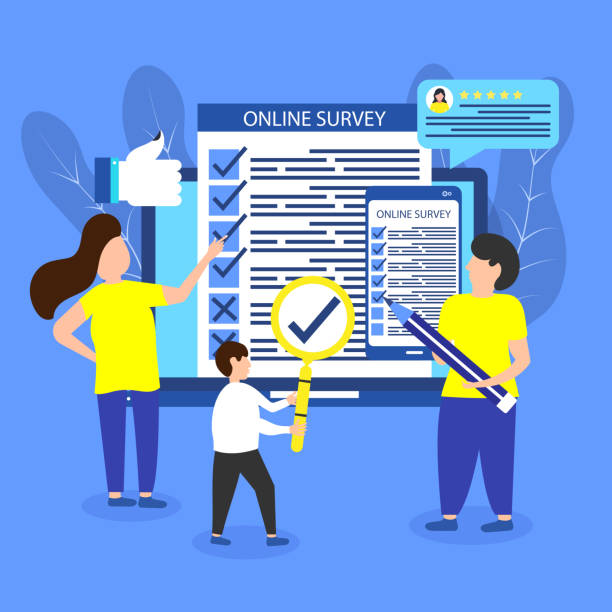
Building a beautiful website with great content is only half the battle.
For your target audience to find your site, you need to optimize it for search engines.
This process, known as #Search_Engine_Optimization or SEO (Search Engine Optimization), helps increase your website’s visibility in organic search results.
SEO principles are divided into two main categories: On-Page SEO and Off-Page SEO.
In On-Page SEO, you optimize your website’s content and structure to be more understandable for search engines.
This includes keyword research to find phrases your audience searches for, using these keywords in page titles (Title Tags), meta descriptions (Meta Descriptions), heading tags (H1, H2, H3) and main text, and also optimizing images (with using Alt Text suitable) and creating user-friendly URL structure.
Additionally, page loading speed, mobile-friendliness of the site, and proper internal link structure are important On-Page SEO factors.
On the other hand, Off-Page SEO refers to activities performed outside your website to increase its authority with search engines.
The most important factor in this section is #Backlinking; that is, getting links from other reputable and relevant websites.
These backlinks indicate to search engines that your website is a trusted and valuable resource.
SEO is an ongoing process and requires patience and analysis.
By using tools like Google Search Console and Google Analytics you can monitor your site’s performance and improve your SEO strategies based on data.
A personal website that is properly optimized for SEO can attract a lot of organic traffic and significantly increase your chances of being seen.
Marketing and Promotion Strategies
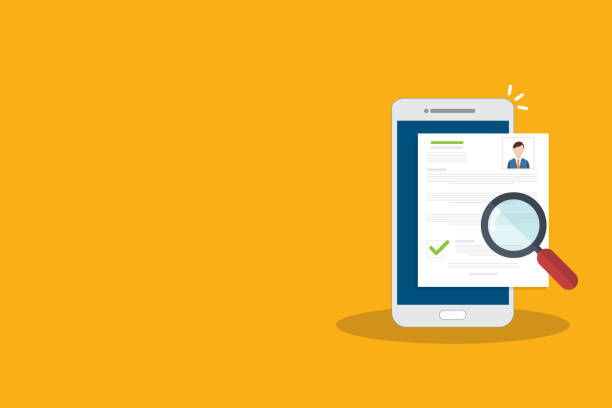
Once your personal website design and launch project is complete and the site is online, it’s time for the crucial stage of marketing and promoting it.
Having a great website alone is not enough; you need to ensure your target audience knows about it.
Various marketing strategies can be employed to increase your website’s visibility.
One of the most effective methods is #content_marketing, where you attract and engage audiences by producing high-quality, valuable content.
This content can include blog articles, guides, infographics, videos, and podcasts.
Then, distribute this content through various channels.
#Social_media is a powerful tool for promoting your website.
Depending on your field of activity and audience, you can use platforms like LinkedIn (for professional networking), Instagram (for visual content), or Twitter (for quick updates and news) use.
#Email_marketing is also a great way to stay connected with your audience and send updates and new content.
You can encourage people to subscribe to your email newsletter by offering free content (such as a small e-book or checklist).
#Guest_Blogging on other relevant and reputable sites not only brings you referral traffic but also helps improve your site’s SEO.
Active participation in relevant online forums, attending webinars or industry events, and even physical business cards with your website address can all help increase visits to your site.
Diversity in marketing strategies and continuous monitoring of results ensures that your efforts to promote your personal website bear fruit.
| Marketing Channel | Description | Key Tips for Personal Website |
|---|---|---|
| Social Media | Sharing content, engaging with audiences, and building communities on platforms like LinkedIn, Instagram, Twitter, Telegram. | Choosing platforms relevant to the audience, using hashtags, linking to the website in bios and posts, producing visual content. |
| Email Marketing | Collecting email lists from visitors and sending newsletters, updates, and exclusive content. | Offering an incentive (e.g., a free e-book) for signing up, regular sending, personalizing emails, inviting to visit new posts. |
| Guest Blogging | Writing specialized articles for other blogs in related fields and receiving links to your personal website. | Finding reputable and high-traffic sites, providing quality content, paying attention to SEO principles in guest articles, building strong backlinks. |
| Networking & Events | Physical and online presence at events, conferences, and webinars to introduce yourself and your website. | Exchanging business cards with site address, participating in discussion panels, following up on online connections after the event. |
Maintenance, Updates, and Security

Building and launching a personal website is not the end; rather, it’s the beginning of a long journey of maintenance, updates, and ensuring security.
Just like a car or any other important asset, your website also needs continuous care to function smoothly and securely.
If your website is built on a CMS like WordPress, regular updates of the WordPress core, theme (Theme) and plugins (Plugins) are vitally important.
These updates often include security fixes and performance improvements.
Ignoring them can expose your site to cyberattacks, slowdowns, or even crashes.
Website #security is a very serious matter.
Use strong passwords and enable Two-Factor Authentication.
Installing an SSL certificate (HTTPS) not only secures your site and encrypts user data but is also beneficial for SEO.
Using reputable security plugins and regularly scanning the website for malware is also recommended.
Regular #Backup of your website data is an essential action.
In case of any issue (such as a cyberattack, human error, or server failure), having a backup allows you to quickly restore your website.
Additionally, you should regularly monitor your website’s performance.
Slow loading speeds, broken links, and technical glitches can disrupt the user experience and harm SEO rankings.
Website content should also be continuously updated.
Ensure your contact information is accurate, external links work, and old articles are updated as needed.
This active maintenance ensures that your personalized website remains fast, secure, and accessible, preserving the value of your investment in personal website design.
Tired of losing customers due to poor e-commerce site design? With Rasaweb, solve this problem forever!
✅ Increase sales and conversion rate of visitors to customers
✅ Smooth and engaging user experience for your customers
⚡ Get free consultation
Beyond Online Presence: Monetization and Long-Term Goals
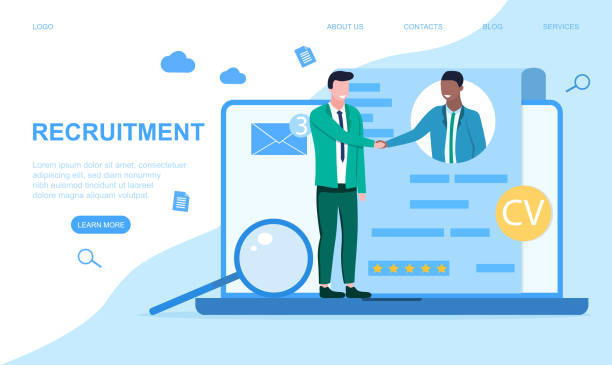
For many individuals, personal website design initially begins with the goal of creating a portfolio, online resume, or blog to share thoughts.
However, the potential of a personal website can extend beyond mere online presence and become a source of income or a tool for achieving long-term professional goals.
#Monetization from a personal website can occur through various methods, depending on your content type and audience.
One of the most common methods is #selling_services or digital products.
If you are a consultant, coach, designer, writer, or artist, your website can be a platform for marketing and directly selling your services.
You can create contact forms, online booking systems, or even a small store to sell e-books, online courses, or your artwork.
#Affiliate_Marketing is another option where you promote others’ products or services and receive a commission for each sale or click.
This method is very popular for bloggers and influencers.
Displaying advertisements (like Google AdSense) can also be a source of income, but it’s usually more suitable for websites with very high traffic and might affect the user experience.
You can also earn income through #sponsorship or by receiving donations from your visitors.
In the long term, a personal website can help you establish yourself as a #thought_leader in your field, create new job opportunities, or even lead to book publications or speaking engagements at conferences.
#Thorough_analysis of monetization potentials and aligning them with your personal brand and main goals is an important step to maximize the utilization of this platform.
The Future of Personal Website Design and New Trends
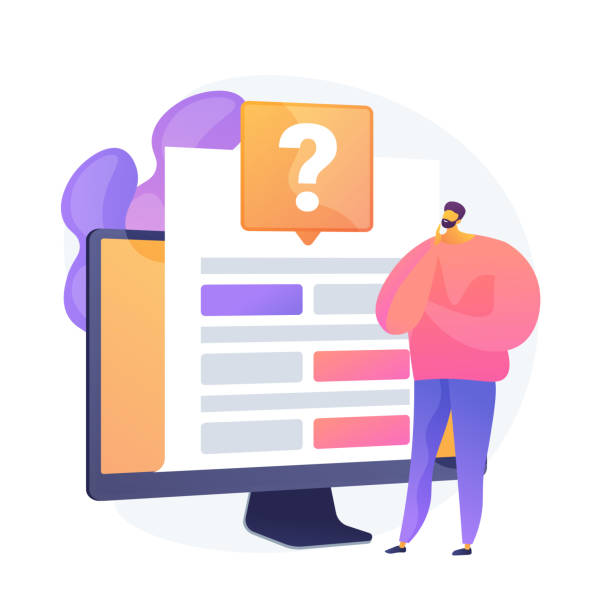
The world of the web is constantly evolving and progressing, and personal website building is no exception.
For your website to remain relevant and effective in the future, it is essential to be aware of new trends and prepare for them.
One of the most important trends is the increasing role of #Artificial_Intelligence (AI) in personalizing user experience and automating processes.
From smart chatbots for answering user questions to personalized content recommendations, AI can make your website smarter and more interactive.
#Voice_Search is also expanding, and optimizing content to respond to voice queries and natural language will become increasingly important.
Website #Accessibility for individuals with various abilities (such as users with visual or hearing impairments) has also become an important standard.
Ensuring your website complies with WCAG guidelines is not only your social responsibility but can also attract more audiences and help with site SEO.
With the emergence of technologies like Virtual Reality (VR) and Augmented Reality (AR), we will witness the creation of more #immersive and interactive web experiences.
Personal websites may include 3D art galleries or portfolios with virtual tour capabilities in the future.
Also, attention to environmental sustainability in web design (Green Web Design) and optimization for less server energy consumption is gradually gaining more importance.
Finally, focusing on user #privacy and data security, given stricter regulations like GDPR, will continue to be a top priority.
By adapting and embracing these emerging trends, you can ensure that your personal website remains a valuable and cutting-edge asset, not only today but also in the future.
Frequently Asked Questions
| Question | Answer |
|---|---|
| 1. What is a personal website? | A website created by an individual to showcase their personal information, resume, portfolio, interests, or blog. |
| 2. Why is having a personal website important? | It allows you to have a professional online presence, showcase your skills and experiences, connect with others, and manage your digital identity. |
| 3. What content should I include on my personal website? | Typically includes an About Me page, resume, portfolio, contact information, blog (optional), and gallery (if needed). |
| 4. How do I choose a suitable domain name for my personal website? | It’s best to use your first and last name (e.g., yourname.com). Choose a short, memorable name relevant to your identity. |
| 5. Do I need coding knowledge to design a personal website? | No, you can build your website without coding using Content Management Systems (CMS) like WordPress or Website Builders like Wix or Squarespace. |
| 6. What is hosting, and what type of hosting is suitable for a personal website? | Hosting is the space where your website files are stored to be accessible to the public. For a personal website, Shared Hosting is usually sufficient and cost-effective. |
| 7. What is the importance of Responsive Design for a personal website? | Responsive design ensures that your website displays correctly and with an appropriate appearance on all devices (computer, tablet, mobile), which is crucial for an excellent user experience. |
| 8. How can I optimize my personal website for search engines (SEO)? | By using relevant keywords, producing high-quality content, optimizing images, having a proper URL structure, and acquiring backlinks, you can improve your website’s SEO. |
| 9. How do I keep my personal website updated? | Regularly add new content (such as blog posts or new portfolio items), keep contact information up-to-date, and ensure that the software and plugins used are current. |
| 10. Can I use my personal website to earn income? | Yes, you can earn income by selling your products or services, advertising, affiliate marketing, or providing specialized consultations, depending on your content type and goal. |
And other services of Rasaweb Advertising Agency in the field of advertising
Smart Brand Identity: Revolutionize campaign management with precise audience targeting.
Smart Sales Automation: An innovative platform to enhance sales growth by optimizing key pages.
Smart Content Strategy: A new service for increasing website traffic through intelligent data analysis.
Smart UI/UX: An effective tool for user engagement with SEO-driven content strategy.
Smart Brand Identity: A professional solution for digital branding with a focus on optimizing key pages.
And over a hundred other services in the field of internet advertising, advertising consultation, and organizational solutions.
Internet Advertising | Advertising Strategy | Advertorial
Resources
- Guide to Personal Site Design on Iran Host
- How to Build a Successful Website? on Mihanblog
- Important Tips for Website Design on Parsdata
- Steps to Create a Personal Website on Rayanak
? Rasaweb Digital Marketing Agency, your strategic partner on the path to online growth and brilliance. We guide your business to the heights of success by providing innovative solutions, from secure website design to professional SEO optimization.
📍 Tehran, Mirdamad Street, next to Bank Markazi, Southern Kazeroun Alley, Ramin Alley, No. 6

